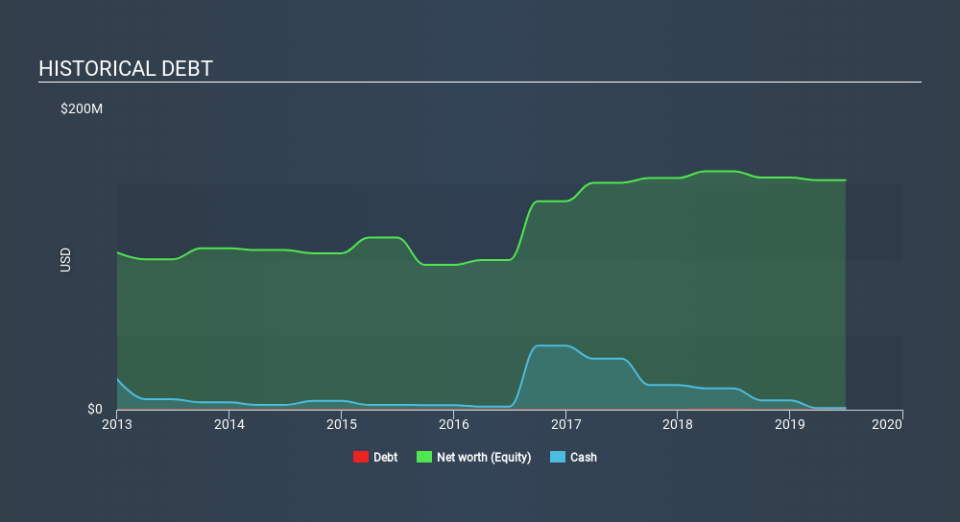Kore Potash (ASX:KP2) Will Have To Spend Its Cash Wisely

There's no doubt that money can be made by owning shares of unprofitable businesses. For example, although software-as-a-service business Salesforce.com lost money for years while it grew recurring revenue, if you held shares since 2005, you'd have done very well indeed. But the harsh reality is that very many loss making companies burn through all their cash and go bankrupt.
So should Kore Potash (ASX:KP2) shareholders be worried about its cash burn? In this article, we define cash burn as its annual (negative) free cash flow, which is the amount of money a company spends each year to fund its growth. Let's start with an examination of the business's cash, relative to its cash burn.
See our latest analysis for Kore Potash
How Long Is Kore Potash's Cash Runway?
A company's cash runway is the amount of time it would take to burn through its cash reserves at its current cash burn rate. In June 2019, Kore Potash had US$1.0m in cash, and was debt-free. Looking at the last year, the company burnt through US$12m. Therefore, from June 2019 it seems to us it had less than two months of cash runway. To be frank we are alarmed by how short that cash runway is! Depicted below, you can see how its cash holdings have changed over time.
How Is Kore Potash's Cash Burn Changing Over Time?
Kore Potash didn't record any revenue over the last year, indicating that it's an early stage company still developing its business. So while we can't look to sales to understand growth, we can look at how the cash burn is changing to understand how expenditure is trending over time. We'd venture that the 65% reduction in cash burn over the last year shows that management are, at least, mindful of its ongoing need for cash. While the past is always worth studying, it is the future that matters most of all. So you might want to take a peek at how much the company is expected to grow in the next few years.
Can Kore Potash Raise More Cash Easily?
While we're comforted by the recent reduction evident from our analysis of Kore Potash's cash burn, it is still worth considering how easily the company could raise more funds, if it wanted to accelerate spending to drive growth. Issuing new shares, or taking on debt, are the most common ways for a listed company to raise more money for its business. Commonly, a business will sell new shares in itself to raise cash to drive growth. By comparing a company's annual cash burn to its total market capitalisation, we can estimate roughly how many shares it would have to issue in order to run the company for another year (at the same burn rate).
Since it has a market capitalisation of AU$30m, Kore Potash's US$12m in cash burn equates to about 57% of its market value. From this perspective, it seems that the company spent a hugh amount relative to its market value, and we'd be very wary of a painful capital raising.
How Risky Is Kore Potash's Cash Burn Situation?
As you can probably tell by now, we're rather concerned about Kore Potash's cash burn. In particular, we think its cash runway suggests it isn't in a good position to keep funding growth. On the other hand at least it could boast rather strong cash burn reduction, which no doubt gives shareholders some comfort. Once we consider the metrics mentioned in this article together, we're left with very little confidence in the company's ability to manage its cash burn, and we think it will probably need more money. We think it's very important to consider the cash burn for loss making companies, but other considerations such as the amount the CEO is paid can also enhance your understanding of the business. You can click here to see what Kore Potash's CEO gets paid each year.
Of course Kore Potash may not be the best stock to buy. So you may wish to see this free collection of companies boasting high return on equity, or this list of stocks that insiders are buying.
If you spot an error that warrants correction, please contact the editor at editorial-team@simplywallst.com. This article by Simply Wall St is general in nature. It does not constitute a recommendation to buy or sell any stock, and does not take account of your objectives, or your financial situation. Simply Wall St has no position in the stocks mentioned.
We aim to bring you long-term focused research analysis driven by fundamental data. Note that our analysis may not factor in the latest price-sensitive company announcements or qualitative material. Thank you for reading.


